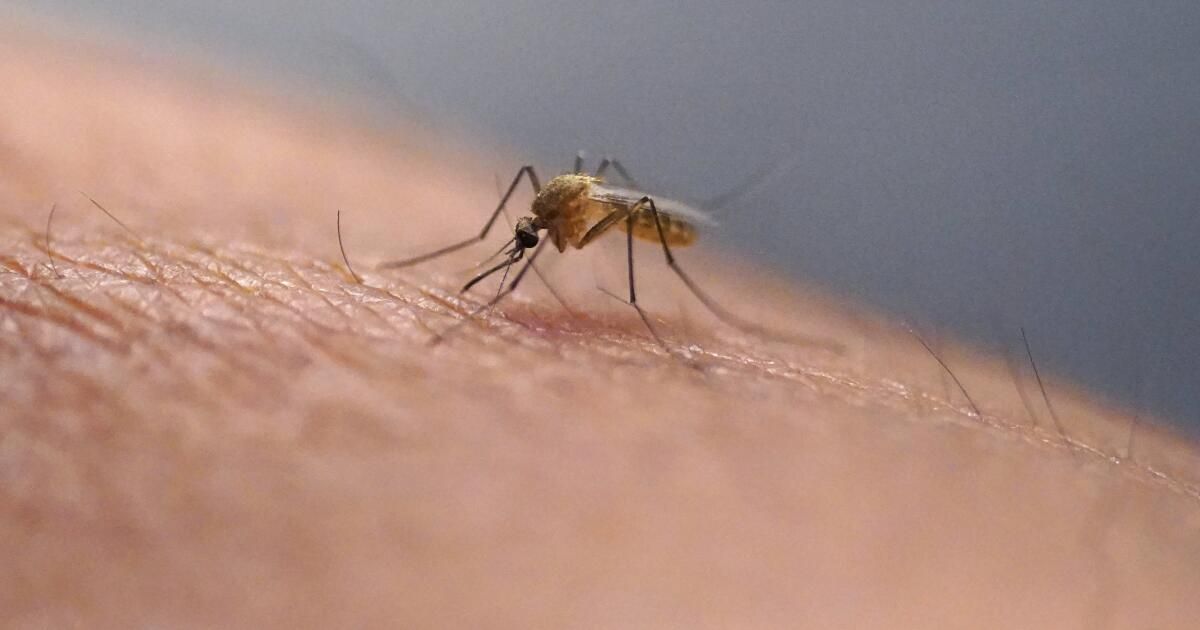The first mosquito-related death in the Bay Area and the detection of mosquitoes carrying West Nile virus in Southern California underscore the risk Californians face as they spend more time outdoors this summer.
But experts say there are simple preventative measures people can take to reduce their chances of being bitten and infected by the virus.
On July 16, a man living in eastern Contra Costa County died from West Nile virus infection, according to the county's public health department. It is the first West Nile virus death reported in the county since 2006.
Contra Costa Health's communicable disease program is investigating the case and has not determined where the person was infected, according to a news release. The agency is not releasing further details about the case to “preserve medical privacy.”
Evidence of West Nile virus has recently been detected in the same region. The Contra Costa Mosquito and Vector Control District found one dead bird and five chickens that tested positive for the virus, all in the town of Oakley.
West Nile virus is transmitted to birds through the bite of an infected mosquito; a mosquito that feeds on an infected bird can become infected with the virus. An infected mosquito can then transmit the virus to a human or another animal.
The infection can be dangerous to humans, with symptoms including fever, headache, vomiting and rash.
According to the California Arbovirus Surveillance Weekly Bulletin prepared by the California Department of Public Health, two human cases of West Nile virus disease have been reported in Fresno and Yuba counties. Additionally, three blood donors were reported to have tested positive for West Nile virus in Fresno County, although they were asymptomatic.
On July 26 alone, 140 new West Nile virus mosquito outbreaks were detected in 21 counties, including Los Angeles, Orange, Placer, Riverside, San Bernardino, Santa Clara, and Yuba. So far in 2024, 583 West Nile virus mosquito outbreaks have been detected in 24 counties.
Last month, Los Angeles County reported that mosquitoes carrying the virus were recovered from a trap in the Winnetka neighborhood of the San Fernando Valley.
In a statement, the Greater Los Angeles County Vector Control District said West Nile virus in the community is not unusual, but “this early detection serves as a critical reminder for all residents to take preventative measures.”
What attracts mosquitoes?
According to the American Mosquito Control Association, there are 30 types of mosquitoes in the United States. While there are differences between them (for example, some feed during the day and others at night), they share a life cycle that depends on the water in which they breed.
There are six types of mosquitoes found in California, but only the Culex mosquito can transmit West Nile virus.
Vector control agencies attempt to eliminate public breeding sites in gutters, underground storm drains, flood control channels, and debris basins. However, mosquito control is a shared responsibility, and residents must do their part by eliminating potential breeding sites around their homes.
Start by identifying items on your property that may hold standing water, which if left untouched for at least seven days, become a magnet for mosquitoes. Typical sites include birdbaths, old tires, clogged gutters, portable basketball hoops, uncovered outdoor grills, potted plants with saucers, and flower vases.
Standing water that also contains leaves, dirt or grass clippings encourages mosquito breeding, according to the American Mosquito Control Association.
Eliminate these breeding sites by draining or dumping the water and then preventing further accumulation. For example, turn over a bucket filled with rainwater or cover your grill. Do this at least once a week.
How to make mosquitoes buzz away
The Greater Los Angeles County Vector Control District suggests that residents apply EPA-registered insect repellent with one of these active ingredients: DEET, picaridin, IR3535 (the trade name for ethyl butylacetylaminopropionate), para-menthane-diol, 2-undecanone (a plant-derived ingredient), or oil of lemon eucalyptus.
The Centers for Disease Control and Prevention recommends against spraying repellent under clothing. The agency also suggests that if you use sunscreen, apply the sunscreen first, then the insect repellent.
Alternatives to chemical-based sprays or creams include repellents with plant-based ingredients, such as citronella, lavender and mint. The American Mosquito Control Association said these ingredients are less effective than their synthetic counterparts, but may work for people who don't attract too many mosquitoes.
You can also try to make your outdoor entertainment area mosquito-inhospitable by placing several tiki torches or other devices that diffuse repellent. But the effectiveness of diffusers can vary depending on the mosquito species.
For example, the Greater Los Angeles County Vector Control District says citronella candles are effective at repelling mosquitoes only in the immediate radius around the candle and only in the absence of a breeze. It goes on to say that Aedes mosquitoes prefer ankles, so candles typically placed on tables won't provide much protection.
Some plants can also offer some level of protection to your yard. These include citronella and some other varieties of geranium, marigolds, lemongrass, catnip, certain types of mint, lavender, and lantana. Some common aromatic herbs have limited mosquito-repellent abilities, such as rosemary, garlic, basil, thyme, and fennel.
Try them one at a time until you find the approach that works best for you.
If, despite all these precautions, mosquitoes still manage to bite you, do not scratch yourself. Scratching can cause a secondary infection and prolong the irritation. In extreme cases, bites caused by scratching can leave scars.
Typically, an anti-itch cream is all you'll need to relieve the discomfort. If you're severely allergic to mosquitoes, the American Mosquito Control Association said you may need a cream with Benadryl or a similar antihistamine.












